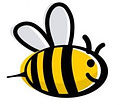If my students were proficient at reading CVC words on their mid-year testing, then they should be even better at it now, three months later, right?
Nope. Not right.
As students learn more advanced phonics rules and see more and more words in context, their accuracy in reading CVC words—both real words and nonsense words—may decrease. I see it every year. Why?
Whereas in December students associated each letter with one sound, they now know two or more sounds for several letters. For example, they know about soft c and soft g and they know all the long vowel sounds. And it’s much easier to use those soft sounds and those long vowels than it is to recall the other sounds. So they start using them when they’re not supposed to. Wez becomes weez, nac might be read as nake or nace or nas.
We’ve also learned consonant and vowel digraphs, so they have a sense that vowels are are more fluid. And they’re often inclined to say /u/ when they see an a because that is what it says in several of our student names.
Also, I’ve been nudging some students to read words as a whole rather than say all the sounds (since that is, after all, the ultimate goal) and this slight pressure can affect their accuracy.
So, around this time of year, I make sure I circle back to having my students practice good ol’ nonsense CVC words from a list. I keep assessment data and anyone who is not doing as well with it as they were back in December gets some extra practice time with me.
In the video above, you’ll see me practicing with a couple of students. This practice time is a good opportunity for me to review the “rules” for good reading using the language we use in our classroom:
Manage your impulsivity (think first).
Strive for accuracy (try your hardest to do it correctly).
Keep your eyes on the paper (don’t look at the teacher).





Circling Back to CVC Words